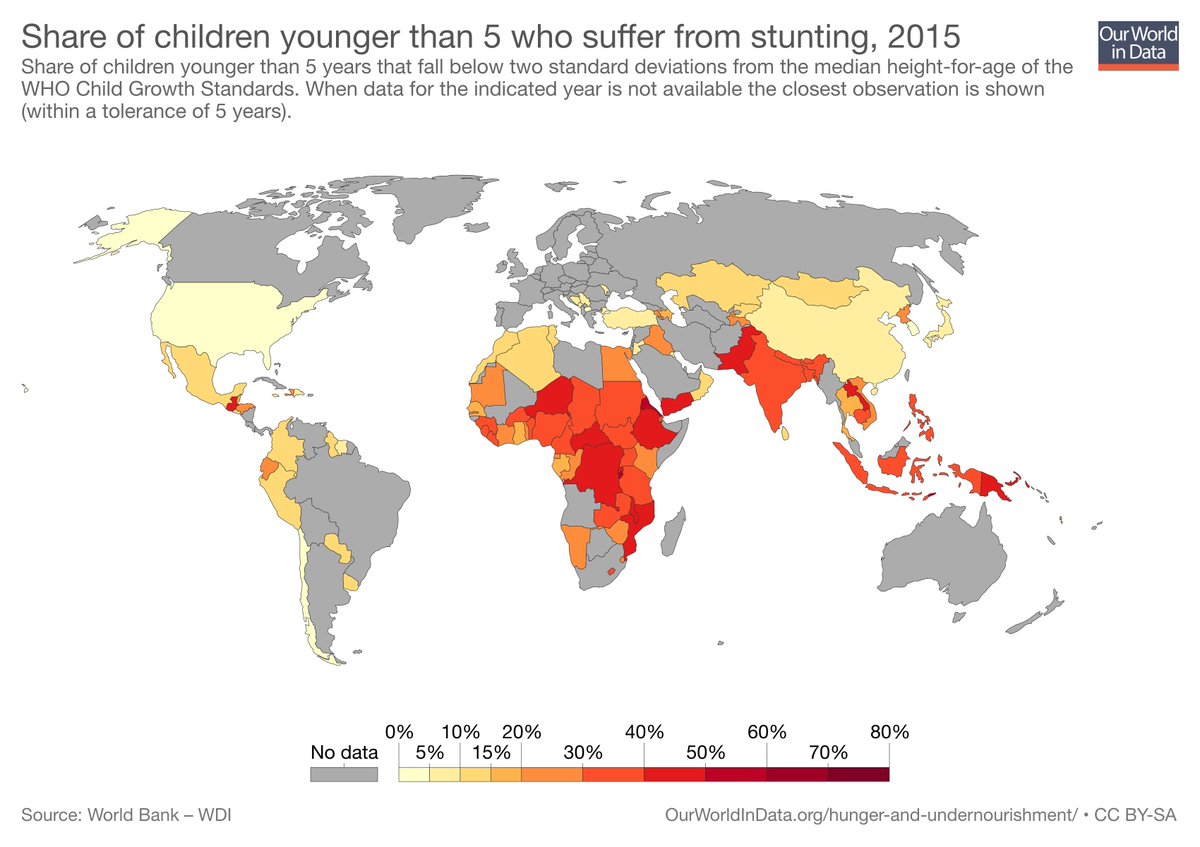These tweets summarise the findings from a recent conference on child #stunting held at @LSEEcHist last September sponsored by @ESRC @cepr_org @LSEnews #globalhealth.
See this video for a summary:
1/10
See this video for a summary:
1/10
Here is also a full copy of the #stunting conference report for those who are interested in the details and in references to the most recent research currently being conducted: goo.gl/LcV1S2
2/10
2/10
Context: 155 million children around the world are stunted. Stunted children are too short for their age because they experience slower growth because of poor nutrition and high rates of infections. #Stunting is concentrated in Africa and South and Southeast Asia today.
3/10
3/10

Context (cont.): Stunted children perform poorly on cognitive tests, receive fewer years of schooling, have lower income as adults and are more likely to live in poverty. Eradicating stunting is a very important policy goal and is part of SDG Goal 2. un.org/sustainabledev…
4/10
4/10
There were four main lessons from the conference about how to move #stunting research and policy forward to deal with this important global challenge.
5/10
5/10

Lesson 1: #Stunting is not a recent phenomenon. Some currently developed countries had high levels of #stunting in the past (c.f. Japan in the graph below) and it took decades of strong improvements in economic development and health to eradicate #stunting.
6/10
6/10

Lesson 2: We need more research on interventions in adolescence. Are the effects of child #stunting on health and development permanent, or could adolescence be a critical window for interventions to mitigate the effects of being stunted? doi.org/10.3945/ajcn.1…
7/10
7/10
Lesson 3: Age matters. For most children, growth faltering occurs between 6 and 24 months and remains flat between 24 and 60 months. Associations between #stunting and wealth, income and parental education are stronger for children over 24 months. doi.org/10.1371/journa…
8/10
8/10
Lesson 4: Interdisciplinary research and perspectives are vitally important. The causes of #stunting are multidimensional. To construct complete models or design experiments researchers need to consider medical, economic, social and cultural drivers of stunting.
9/10
9/10
So those were our findings. If you want to learn more, please visit the conference website: sites.google.com/view/stuntingc…
Also get in touch if you have any ideas about #stunting or would like to be included in further discussions of the network.
10/10
Also get in touch if you have any ideas about #stunting or would like to be included in further discussions of the network.
10/10
• • •
Missing some Tweet in this thread? You can try to
force a refresh






